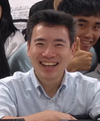Field trip to the Overseas Migration Museum 英語コミュニケーション学科
2021年11月08日
ゼミ/授業名:Fujiokaゼミ
Each semester, students in Ken Fujioka's seminar take a field trip to the Overseas Migration Museum in Minato Mirai, Yokohama to conduct research on Japanese emigrants and their life overseas.
According to the archival information on the Museum's pamphlet, "the number of Japanese emigrants and their descendants abroad exceeds 2.5 million, at present." I believe that the museum was established as a way to acknowledge and show appreciation to the 2.5 million Japanese who made the courageous decision to embark on a journey, by crossing the Pacific Ocean and settling in strange lands called Canada, United States, Brazil, Peru and other countries in the Americas. Most of them knew very little about the country they were going to, didn't know the language or culture, had very little money, and carried only a few items in their luggage. However, what they lacked in knowledge, material and money, they made up for it in hope, ambition and effort.
 JICA-Yokohama Centre wikimapia.org
JICA-Yokohama Centre wikimapia.org Yokohama Japanese Overseas Migration Museum tripadvisor.com
Yokohama Japanese Overseas Migration Museum tripadvisor.comPrior to our excursion at the Overseas Migration Museum, seminar students developed several research questions to which they would try to find answers. They did this by observing the museum galleries and artifacts, video-recorded interviews, information on posters and from the guide's mini- talk. Keisen students found the information fairly easily because they were written both in English and Japanese.
 Students taking notes
Students taking notes Gathering information
Gathering informationAfter gathering information from the museum, they formed groups and planned their presentations. They decided on some important planning points such as:
- What is our presentation research question?
- Photos we should include for our presentation;
- Background information that is related to our topic;
- Answers to our research question;
- What to say in our introduction;
- What to say in our conclusion;
- What we learned from this field trip; and
- References we used to gather our information.
Some of the students' research questions included:
- Why did Japanese emigrants leave Japan?
- How did they live overseas?
- What kinds of work did they do?
- How were children of emigrants educated?
- How did the Japanese community develop?
- What kinds of food did they eat?
- What problems did emigrants face there?
Here were some of their presentation titles:
 Students taking notes
Students taking notes Gathering information
Gathering information Gathering information
Gathering informationThanks for reading about our field trip to the Overseas Migration Museum in Yokohama. I hope you can join us next time!
担当教員:Ken Fujioka
 I have a Japanese name and I've lived in Japan for a long time. However, I am an American. My great grandfather was born in Yamaguchi Prefecture. In 1894, he and his wife emigrated and worked in Hawai'i. They returned to Japan but his oldest son, my grandfather, remained in Hawai'i with his family there. His oldest son, my father, was also born in Hawai'i. In Japanese, I am a 日系四世。My family history is interesting because it follows some important events in world history such as the Meiji period, World War II and Showa period. As a result, I designed a history course about Japanese Americans.
I am an American but I was born in Nigeria. How is that possible? Although I was born outside of the United States I was a citizen by birth because my parents were also Americans. After Nigeria, I lived in Turkey, Japan, Indonesia, Brazil and Thailand. By the time I entered college I had lived in seven countries. Through my overseas experience I learned many things about each country such as languages, customs, foods and so on. For these reasons, I designed a course about understanding cultural differences.
I have a Japanese name and I've lived in Japan for a long time. However, I am an American. My great grandfather was born in Yamaguchi Prefecture. In 1894, he and his wife emigrated and worked in Hawai'i. They returned to Japan but his oldest son, my grandfather, remained in Hawai'i with his family there. His oldest son, my father, was also born in Hawai'i. In Japanese, I am a 日系四世。My family history is interesting because it follows some important events in world history such as the Meiji period, World War II and Showa period. As a result, I designed a history course about Japanese Americans.
I am an American but I was born in Nigeria. How is that possible? Although I was born outside of the United States I was a citizen by birth because my parents were also Americans. After Nigeria, I lived in Turkey, Japan, Indonesia, Brazil and Thailand. By the time I entered college I had lived in seven countries. Through my overseas experience I learned many things about each country such as languages, customs, foods and so on. For these reasons, I designed a course about understanding cultural differences.


